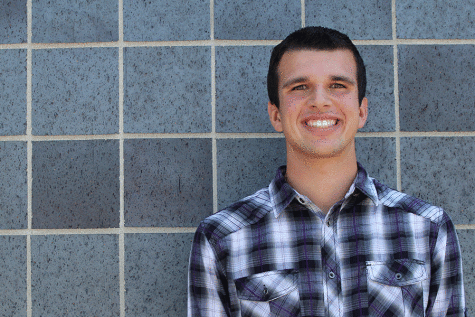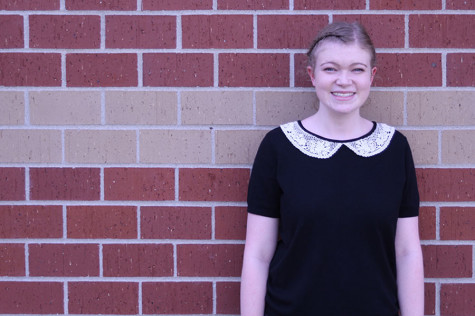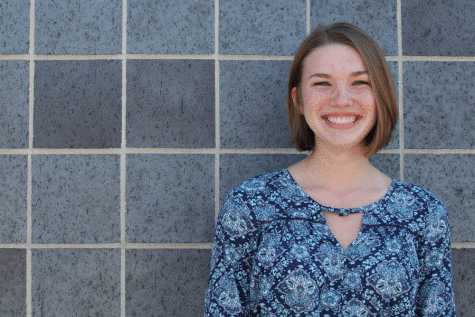Crowding at school manifests itself to students and staff
With a constantly increasing student population, students and staff begin noticing the effects of an overcrowded school
Photo illustration.
September 24, 2015
With the constant influx of students coming into the school each year, students and staff are beginning to feel like they have less space. While much of the focus has been on crowding in the parking lot, students and staff can see this crowding other places inside the school. Despite administrative efforts, there’s only so much that can be done to ease crowding without spending a lot of money, time and effort.
When the school was first built in 2000, according to director of administrative services and community relations Alvie Cater, the district didn’t intend for its population to exceed 1,000 students. Instead, the plan was for Mill Valley to be second in a series of small high schools.
Now, although the school has a student capacity of 1,500, Cater said this would not be optimal.
“This site was never designed to accommodate a high school of 1,300,” Cater said. “We can put 1,500 students in here, [but] it’s not ideal.”
IN THE HALLS
For sophomore Greta Gustafson, crowding at the school is most visible in the halls, which makes it difficult to maneuver around other students.
“Most apparent would probably be … hallways. A lot of people, it’s hard to get around,” Gustafson said. “It’s just really crowded in the hallway when you’re trying to get by.”
Junior Charlotte Muttai notices this increase in students as well, especially in the main hallway.
“Going from class to class, if you even try going [through] the main hallway, you can’t,” Muttai said. “You have to go around and it’s really, really annoying.”
IN THE LUNCHROOM
Long lines and little seating plague lunch, according to Muttai.
“The lunch lines are extremely [long],” Muttai said. “The first few days, you had to reserve your spot if you wanted to sit down at lunch, unless you wanted to go sit with the teachers.”
The increase in students does not go unnoticed by kitchen manager Jeannie Gile, who has worked at the school since it opened. According to Gile, an increase in food is the only real change this year.
“We have to make more [food] … [but] we have the same amount of employees that [have] the same amount of hours; we just have to go faster,” Gile said. “[It’s] a little more stressful but … we get through the day. We’ve never been late serving the kids. We just have to move a little faster, talk a little less.”
IN THE CLASSROOM
Math teacher Kristen Chavez’s average class this year has 28 students, and her number of AP Statistics classes has doubled. Now, she is concerned about her students learning what they need to in classes where there are simply too many of them.
“It’s hard when there’s only one of me and that many who need to ask a question,” Chavez said. “I don’t feel like I always get to answer all the questions that all my kiddos need because there’s just not enough time.”
Due to a shortage of AP Statistics textbooks early this year, senior Noah Callahan has had to study and complete assignments without a book. He had yet to receive his textbook at the time of writing.
“I have to learn stuff more on my own,” Callahan said. “Since there’s more students, there’s going to be more questions and so there’s just some stuff I’m going to have to go out and solve by myself without the teacher’s help.”
With textbooks, Chavez is also adjusting how she plans classes in order to accommodate the increase in students.
“I’m definitely more conscious of the time it’s going to take to do something and … ways I can cut that down at times,” Chavez said. “I’m worried that I’m going to have to [cut] some things just because it’s going to take too much time — time that I can’t make up somewhere else.”
SOLUTIONS
When it comes to solutions, Cater sees students voluntarily transferring to De Soto High School may be the best solution. In the three years of open enrollment at DHS, over 230 students within Mill Valley boundaries have opted to attend school at DHS.
“I think that’s worked well so far,” Cater said. “To me, the answer to the enrollment pressure at Mill Valley is to get students to voluntarily transfer to De Soto High School, and I think we can accomplish that.”
Crowding becomes a problem whenever a school district’s size increases. However, he said the district should be able to move past crowding as an issue.
“Anytime a school district has gone through the growth that we’ve experienced, there are going to be challenges,” Cater said. “With this particular issue, I really think it’s an issue we can overcome.”













